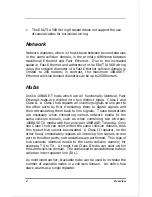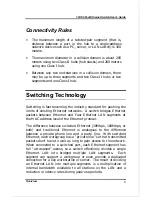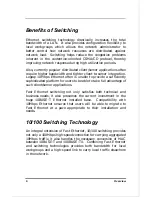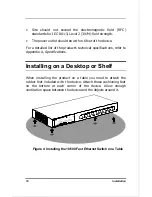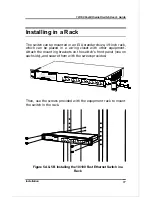
6
Overview
Benefits of Switching
Ethernet switching technology drastically increases the total
bandwidth of a LAN. It also provides configuration flexibility to
local workgroups which allows the network administrator to
better control how network resources are distributed against
network load. Switching helps reduce the congestion problems
inherent in the contention-oriented CSMA/CD protocol, thereby
improving network response during high utilization periods.
Also, currently popular distributed client/server applications often
require higher bandwidth and tighter client-to-server integration.
Legacy 10Mbps Ethernet often is unable to provide a sufficiently
sophisticated platform for users to be able to take full advantage of
such client/server applications.
Fast Ethernet switching not only satisfies both technical and
business needs, it also preserves the current investment in the
huge 10BASE-T Ethernet installed base. Compatibility with
10Mbps Ethernet ensures that users will be able to migrate to
Fast Ethernet at a pace appropriate to their installation and
needs.
10/100 Switching Technology
An integral extension of Fast Ethernet, 10/100 switching provides
not only a 100Mbps high-speed connection for carrying aggregated
10Mbps traffic, it also handles the necessary conversion of MAC
between 10BASE-T and 100BASE-TX. Combining Fast Ethernet
and switching technologies provides both bandwidth for local
workgroups and a high-speed link to carry local traffic elsewhere
in the network.













